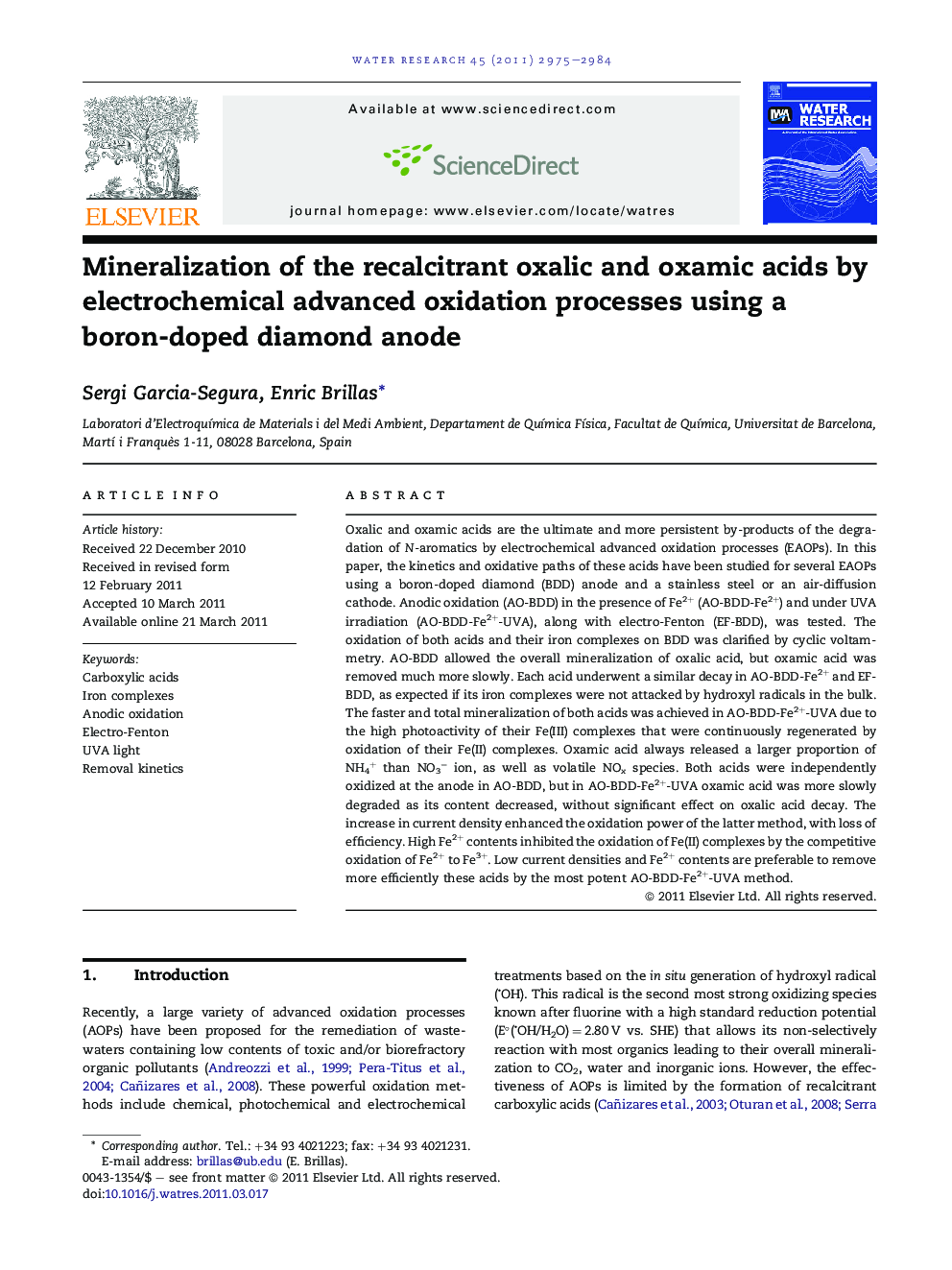| کد مقاله | کد نشریه | سال انتشار | مقاله انگلیسی | نسخه تمام متن |
|---|---|---|---|---|
| 4483450 | 1316888 | 2011 | 10 صفحه PDF | دانلود رایگان |

Oxalic and oxamic acids are the ultimate and more persistent by-products of the degradation of N-aromatics by electrochemical advanced oxidation processes (EAOPs). In this paper, the kinetics and oxidative paths of these acids have been studied for several EAOPs using a boron-doped diamond (BDD) anode and a stainless steel or an air-diffusion cathode. Anodic oxidation (AO-BDD) in the presence of Fe2+ (AO-BDD-Fe2+) and under UVA irradiation (AO-BDD-Fe2+-UVA), along with electro-Fenton (EF-BDD), was tested. The oxidation of both acids and their iron complexes on BDD was clarified by cyclic voltammetry. AO-BDD allowed the overall mineralization of oxalic acid, but oxamic acid was removed much more slowly. Each acid underwent a similar decay in AO-BDD-Fe2+ and EF-BDD, as expected if its iron complexes were not attacked by hydroxyl radicals in the bulk. The faster and total mineralization of both acids was achieved in AO-BDD-Fe2+-UVA due to the high photoactivity of their Fe(III) complexes that were continuously regenerated by oxidation of their Fe(II) complexes. Oxamic acid always released a larger proportion of NH4+ than NO3− ion, as well as volatile NOx species. Both acids were independently oxidized at the anode in AO-BDD, but in AO-BDD-Fe2+-UVA oxamic acid was more slowly degraded as its content decreased, without significant effect on oxalic acid decay. The increase in current density enhanced the oxidation power of the latter method, with loss of efficiency. High Fe2+ contents inhibited the oxidation of Fe(II) complexes by the competitive oxidation of Fe2+ to Fe3+. Low current densities and Fe2+ contents are preferable to remove more efficiently these acids by the most potent AO-BDD-Fe2+-UVA method.
► Oxalic acid is completely mineralized by anodic oxidation with a BDD anode.
► Its degradation is enhanced in the presence of Fe2+ and under UVA irradiation.
► Total mineralization, but at lower rate, is also achieved for oxamic acid.
► The removal rate of mixed acids depends on their oxidation and photolysis ability.
► Low current densities and Fe2+ contents yield higher mineralization efficiencies.
Journal: Water Research - Volume 45, Issue 9, April 2011, Pages 2975–2984